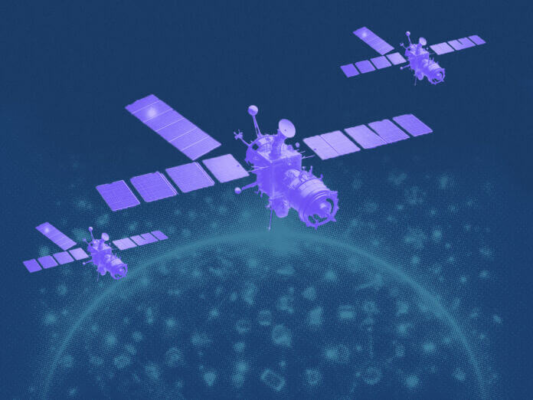

Legacy cellular network deployments cover more than 80% of the population but less than 40% of land and less than 20% of Earth. Satellite connectivity has been used for years to provide ubiquitous coverage. However, its high cost has limited use in very specific scenarios, such as TV and broadcasting. In the IoT domain, non-terrestrial networks have always been a last-resort alternative to terrestrial networks.
In recent years, the cost of non-terrestrial network (NTN) solutions has dropped. As a result, it is economically feasible to use non-terrestrial networks in IoT devices for communication and to answer the need for “communication everywhere.”
NTN has developed into a communication channel of choice in various scenarios, including that of an emergency communication network or offloading traffic from the terrestrial networks during peak times. Industries such as automotive, energy infrastructure, agriculture, maritime, railway, and more have the option to enjoy true global communication.
Mountain climbers, for example, often move from connected areas to areas outside of cellular coverage. Extreme sports require having a connected device in the event of an emergency, and hybrid cellular/NTN-connected devices can help in those situations.
Remote installations are also in need of satellite IoT. Maritime shipments, offshore oil rigs, and trains typically find themselves outside of cellular range. NTN can provide a reliable connection for monitoring and controlling these installations, even in remote locations.
Over the past few years, we have seen many new players in non-terrestrial ne, many of whom are developing their own technology. 3GPP developed standards to enable the market to grow, for both broadband NTN and also for IoT-NTN- LTE-M and NB-IoT. 3GPP has started with study items in releases 15 and 16 and included a work item starting in release 17.
Looking at Satellite IoT Trends
According to IoT Analytics, the total number of satellite IoT subscribers reached 5.1 million in 2021. Predictions state it will grow at a 22% CAGR between 2021-2026 and expect it to reach 13.5 million subscribers by 2026.
Non-terrestrial networks consist of satellites – Geostationary Equatorial Orbit (GEO), Medium-Earth Orbit (MEO), and Low-Earth Orbit (LEO) – as well as high-altitude platform systems (HAPS), which include unmanned airships or airplanes above 20 km, and unmanned aerial systems (UAS) or drones.
All satellite systems used to provide IoT/M2M communication services are based on either GEO or LEO satellites. GEO constellations are more associated with legacy satellite operators, while LEO satellite services are provided by a combination of established and emerging satellite operators.
LEO vs. GEO
LEO constellations are quickly becoming the preferred option for satellite operators that offer IoT/M2M connectivity services. It offers far quicker and cheaper network building and deployment, a better link budget, and a higher availability of orbit paths. Additionally, LEO offers better latency than GEO due to the shorter distance to Earth.
GEO, in contrast, has the advantage that it provides a much larger cover area, which also means it requires fewer satellites to deliver global coverage. GEO satellites appear stationary when viewed from a fixed point on the ground, and rotate at the same speed and direction of the earth. Ground antennas can connect to the satellite by pointing at it, without needing to track its position. This helps make using GEO technology relatively inexpensive, while at the same time, these satellites have a much longer lifetime.
The round-trip time for a GEO satellite is approximately 600–800 ms, while data moves back and forth to a LEO satellite in the range of 30–50 ms. This might create the impression that real-time applications are better suited to LEO constellations.
However, today’s LEO satellite IoT networks have a limited number of satellites in orbit. They are unable to provide continuous connectivity to the entire world but rather provide intermittent periodic coverage. This implies that IoT devices can only provide data points a few times every 24 hours as the satellites move around Earth. Consequently, near real-time applications are often better accommodated by latent GEO constellations than LEO constellations.
The Future of IoT NTN
The future of NTN looks promising, as the technology continues to evolve and improve. Developers are working on new technologies, like low-power radio and advanced modulation schemes, to enhance the efficiency and reliability of NTN connections. Additionally, companies are working on reducing the costs of launching and maintaining LEO satellites, making it more accessible for businesses of all sizes to use NTN for their IoT applications.
NTN connectivity is an increasingly important technology for connecting devices in remote and hard-to-reach areas. As the technology continues to improve and costs decrease, we can expect to see more and more devices and applications utilizing NTN connectivity in the future.


